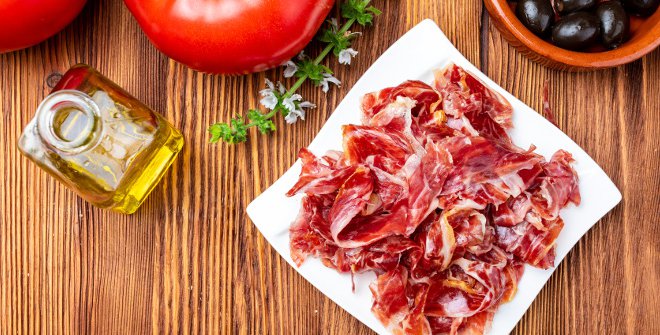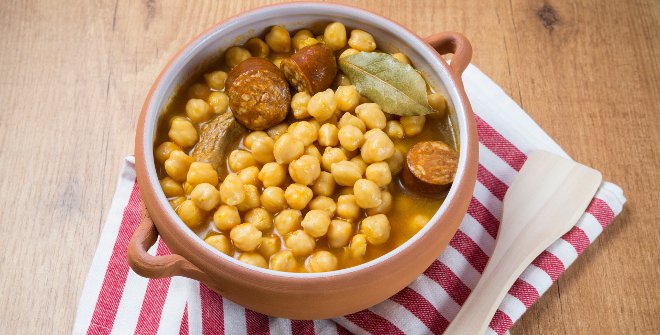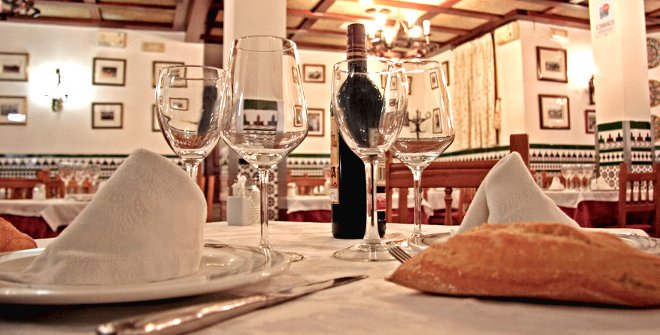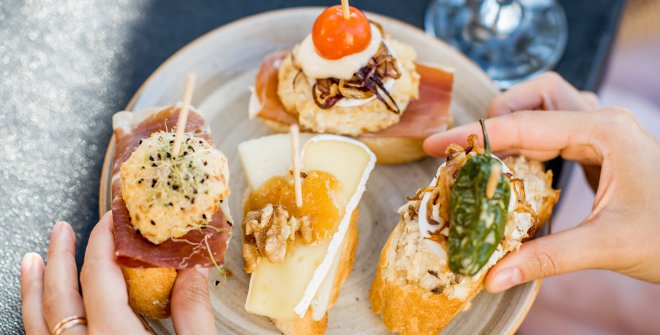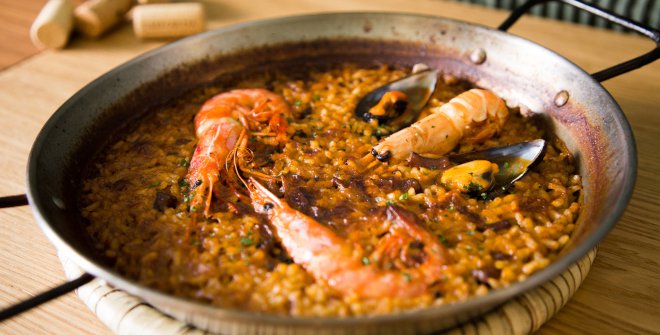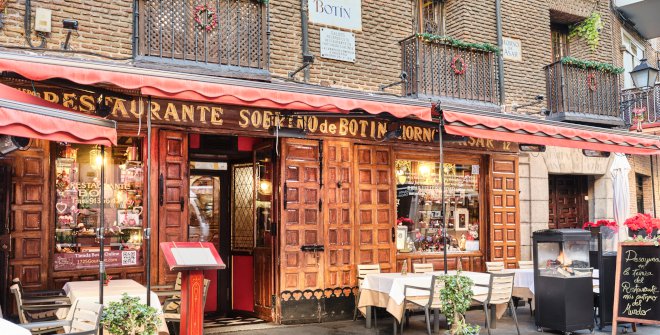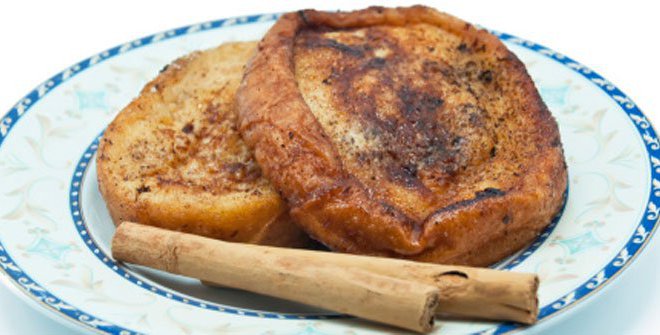Flavours from all over Spain in Madrid
Madrid has its own gastronomy with classic recipes of which stew in three stages, tripe, snails, squid sandwiches and tapas are a must. However, the city also allows culinary specialities from other parts of Spain to be savoured. All of the autonomous communities have “gastro” delegations here in the capital, therefore it won’t be difficult to taste the best bean stew from Asturias, delicious sucking pig from Segovia, tasty calçots from Catalonia or the best Galician-style octopus, to name just a few. Some typical Spanish dishes are listed below so don’t miss out on trying them on your trip to the capital.
Paella
Hailing from the Valencia, paella is one of the icons of our gastronomy. The principal ingredient here is rice but there are many variations of this dish: seafood paella (with fish and seafood), mixed paella (meat and seafood) and mountain paella (with pork ribs, rabbit and chicken). Some very well-known chefs dare to experiment with more exotic recipes. Take for example Rodrigo de la Calle, who has gained much success with his oyster paella. You can try this contemporary twist at the emblematic San Miguel Market, located just off Plaza Mayor. Do you prefer a more traditional paella? Well then head to La Paella de la Reina, next to Gran Vía avenue, or La Taberna de Peñalver. Don’t forget to have a look at our article on the leading rice restaurants in the city.
Roast Suckling Pig
Segovia and Arévalo boast the most renowned restaurants for trying this delicious hundred-year-old recipe, but you can also sample it at some establishments right here in Madrid. The meat is usually cooked in an earthenware dish in a wood-fired oven until the suckling pig’s skin toasts and becomes nice and crunchy. They say that the best in Madrid can be savoured at Coque, Botín, Casa Pedro and Los Galayos. It’s worth mentioning that Castile and Leon is home to both lambs and suckling lambs, which make for one of the most typical dishes of Castilian cuisine and an extremely popular choice during celebrations all over Spain.
Galician Octopus
In Aristotle’s Ancient Greece, the octopus’s ability to camouflage itself was observed. What we don’t know is whether the philosopher ever got the chance to taste it. If not, it’s certainly his loss, as the people from Galicia would agree. They prepare it like nobody’s business! All it needs is a dash of paprika, salt and oil. Here in the city, you’ll find many Galician restaurants where you can enjoy the speciality: La Gran Pulpería, O’Pulpo, Lúa (with one Michelin Star), Los Montes de Galicia, Villa de Foz, Garelos and Morgana.
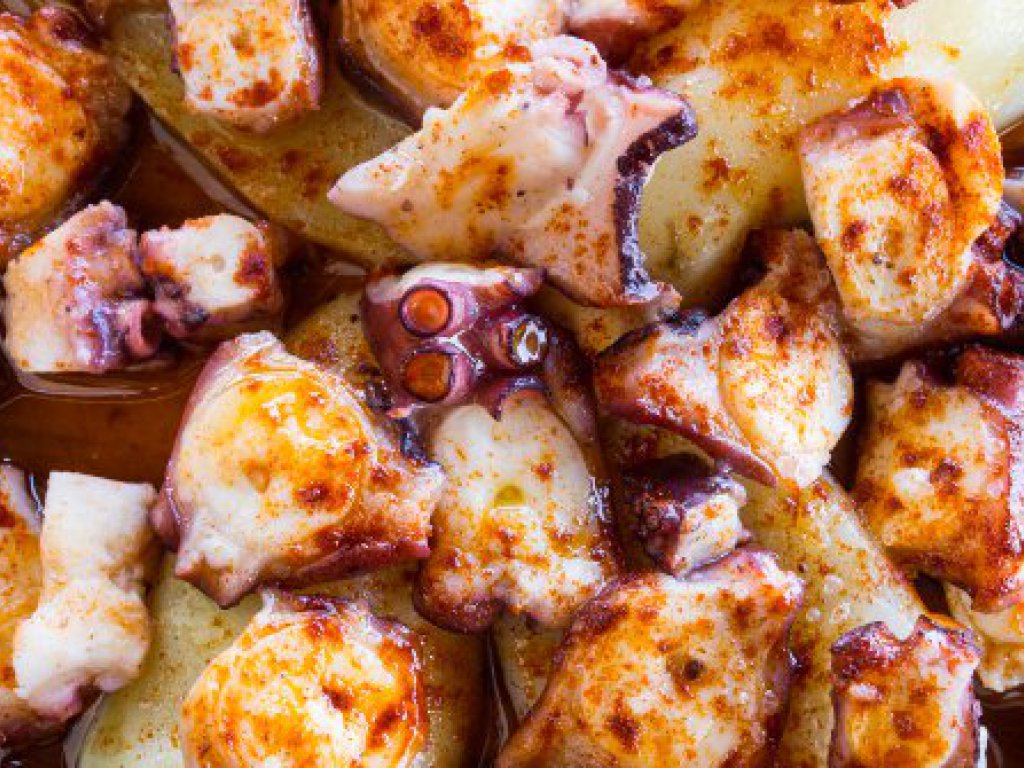
Bean Stew
This is the tastiest and most traditional dish of the rich Asturian cuisine. This all-round classic is prepared using fabes (white beans from the area), spicy chorizo sausage, lard, local black pudding and pork shoulder. It takes time and, according to popular legend, it tastes better the day after it’s cooked. In Madrid, it can be sampled at many establishments although we recommend Casa Hortensia, Asturianos, El Oso, La Hoja and Asgaya; the signature cuisine restaurant with its roots firmly in Asturias. La Xida also stands out, the first restaurant in Madrid that combines Mexican and Asturian dishes in the Salamanca neighbourhood.
Fried Fish
As long as it’s well prepared, fried fish is an absolute delicacy that’s typical of Andalusia. A normal serving usually features red mullet, sardines, anchovies, cuttlefish, etc. The secret lies in the product and, above all, how it’s fried. It can be tricky to get right, but luckily for us, here in the capital we can find some establishments that have mastered the dish—no doubt you’ll savour licking your fingers at the end because it’s definitely something that’s better eaten with your hands. How’s about some restaurant recommendations? Check out La Giralda, Bodega La Andaluza and Taberna del Puerto. At El Albero, located just outside the city in Paracuellos del Jarama, they serve what they call “Jarama” anchovies which are absolutely incredible.
Marmitako
This is Basque cuisine’s dish par excellence. Marmitako is a hot tuna stew accompanied with potatoes, onions, green peppers, red peppers and tomato. You’ll find this culinary delight on every table in the Basque Country. In spite of being a calorific stew, it’s eaten more in summer because that’s when longfin tuna is caught. In Madrid, you can try it in many restaurants that serve up option from the area, such as Dantxari, Carlos Oyarbide, Jai Alai or Taberna Gaztelupe.
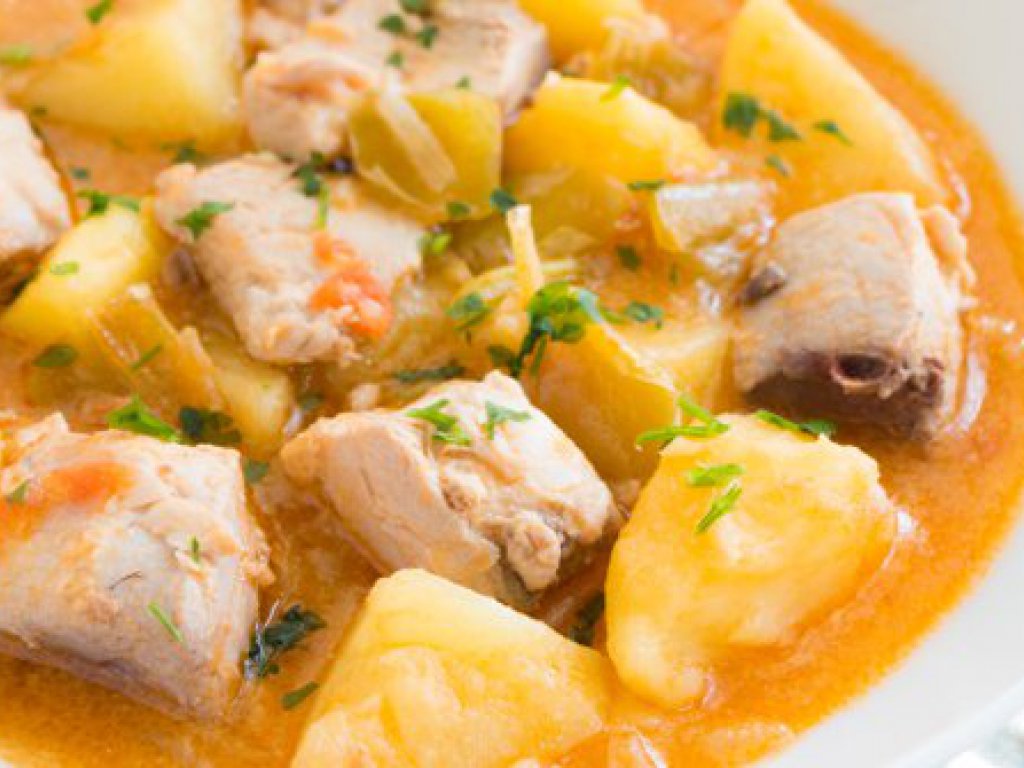
Calçots
This tender, bulbous and sweet variety of onion is commonly found in inland Catalonia. One of the signature dishes of gastronomy from the region, calçots are eaten at the end of winter or early spring with romesco sauce or salvitxada. They’re the main feature of calçotades, daytime barbecues held around that time of the year, at which the vegetable is charred to perfection on the grill. Here in the city, you can sample them at Casa Jorge, Paradís Madrid, Can Punyetes, Candeli or Restaurante 3B.
Oxtail
This traditional stew from Cordoba consists of an oxtail casserole which is cooked slowly in a sauce made up of onions, tomato, carrots, wine, olive oil, garlic and a few peppercorns. The recipe appears to date back to the Roman times, as there are references to it in the book De re coquinaria (On the Subject of Cooking) by Apicius. The best oxtail in the capital can be savoured in the vicinity of Las Ventas Monumental Bullring, at El Fogón de Trifón or at Casa Toribio. Other restaurants nearby, such as Taberna El Burladero and Los Timbales, also specialise in preparing this delicious dish.
Canarian Wrinkled Potatoes
Found on the menu of any establishment in the Canary Islands, this dish is simple. All you need are very special small potatoes served with a sauce known as mojo, which can be spicy or mild. If you’re eager to try them in Madrid, go no further than La Cecilia de Allende, Taberna Los Gallos, Picón Madrid or Gofio by Cicero Canary, which boasts a Michelin Star.
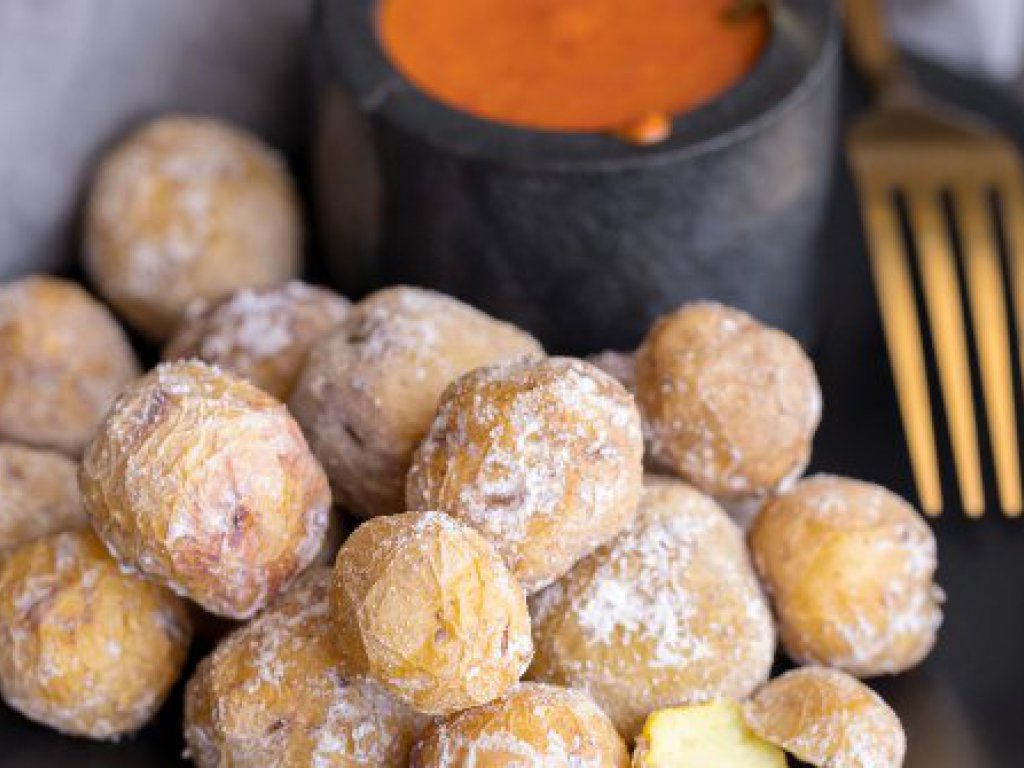
Torreznos (Pork Crackling)
Torreznos are pieces of pork rind that are fried or sautéed on the grill. This affordable delight is not only very typically Spanish, but it also provides the body with a lot of energy. They’re eaten throughout most of the country, normally as a small tapa or aperitif, although each region has its own variations. To taste the best ones in Madrid, go to Neotaberna de Santerra, La Raquetista, Treze, Taberna Arzábal or Lakasa.
Potato Omelette
Found in every bar and restaurant in Spain, this is the national dish par excellence. It’s made with finely diced potatoes, oil, eggs, salt and onion, although this last ingredient has led to much debate. In the city, the following are well known for their omelettes: Vinos 11 Casa Dani, Hevia, Taberna Pedraza, Pez Tortilla, Las Tortillas de Gabino, José Luis and Bodega de La Ardosa.
Migas (Breadcrumbs) from Extremadura and La Mancha
In different parts of Spain, there are variations on this popular classic. Extremadura and La Mancha both stand out where they also call migas shepherd’s breadcrumbs (del pastor), fried breadcrumbs (ruleras) or labourer’s breadcrumbs (de gañán). According to tradition (and preferences!), the recipe can vary but the basic ingredients are bread, olive oil and garlic. As it’s a dish that’s characteristic of the harvest season, it’s often accompanied with grapes. You can try it at establishments like La Vera, where they specialise in cuisine from Extremadura, Casa de Castilla La Mancha en Madrid or at Hogar Extremeño de Madrid.

Gazpacho and Salmorejo
These two essential options in Spanish gastronomy are very popular in summer as they’re served chilled. The difference between them is that gazpacho, often called Andalusian gazpacho, is a cold soup made of vegetables seasoned with oil and vinegar, whereas salmorejo is an emulsion. The former has a fine texture allowing it to be drunk from a glass or bowl, but the latter is thicker, like a cream, with a consistency similar to that of mayonnaise. Both are served at Lambuzo and at 11 Nudos Terraza Nordés, where their salmorejo is served with diced 100% Iberian acorn-fed ham.
Iberian Ham and Cold Meats
Among the most popular food in Spain are cold meats, which mainly come from pig meat. Popular varieties include spicy chorizo sausage, whereby minced meat is marinated with paprika and garlic and then later well cured and aired. Black pudding, which doesn’t actually contain meat but is characterised by the use of pig’s blood, is seasoned with onion, garlic and spices. Chistorra or longaniza, which can be eaten fried or roasted, is typical of the Navarra region and is prepared with freshly minced pork to which we add fat, garlic, salt, paprika and parsley. Dry-cured pork loin, on the otherhand, is cut into thin slices and is eaten raw with a piece of bread. It’s easy to tell the difference between salchichón and fuet, which are both variations of cured pork sausage very similar to longaniza, as the fuet sausage is much thinner than the former.
Not forgetting the crème de la crème of Spanish cuisine: el jamón. Here we’re talking about serrano and Iberian ham, which come from the leg of the pig; the same part of the animal from which we enjoy pork shoulder or cooked ham. Serrano ham is made from the rear legs of the pig, which are seasoned and cured in the fresh air. The front legs can be prepared in the same way, but they are called paletillas, or shoulders.
